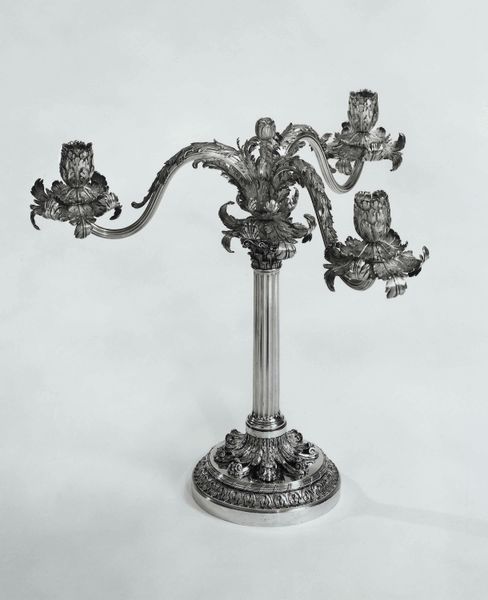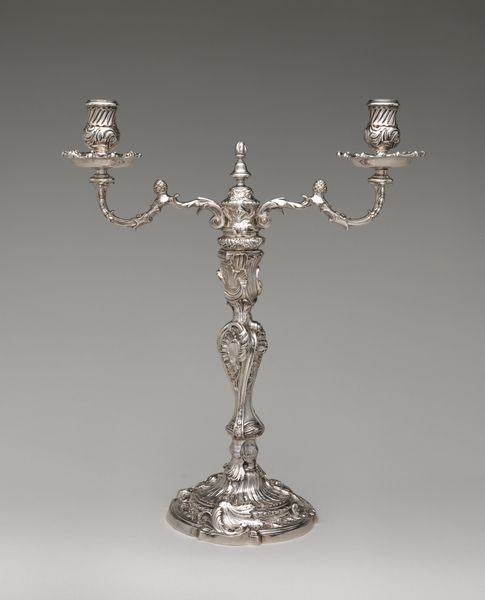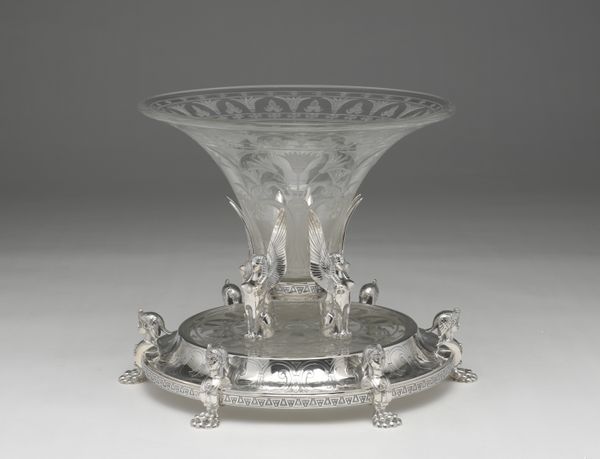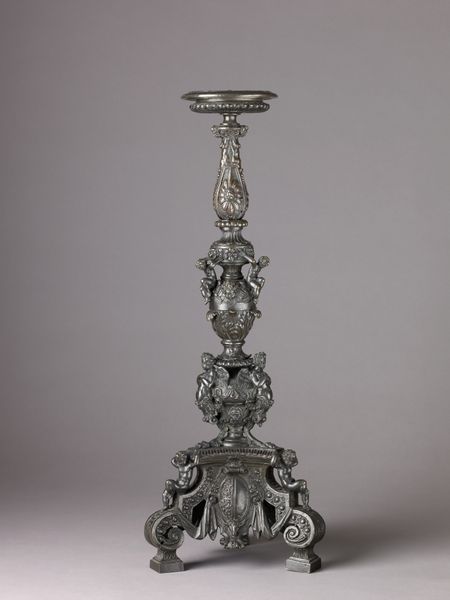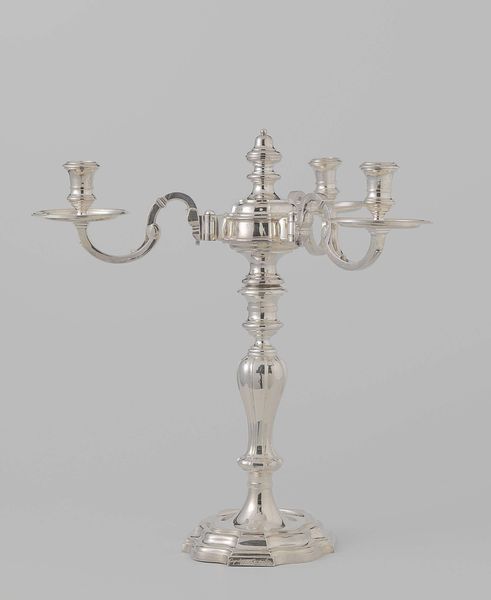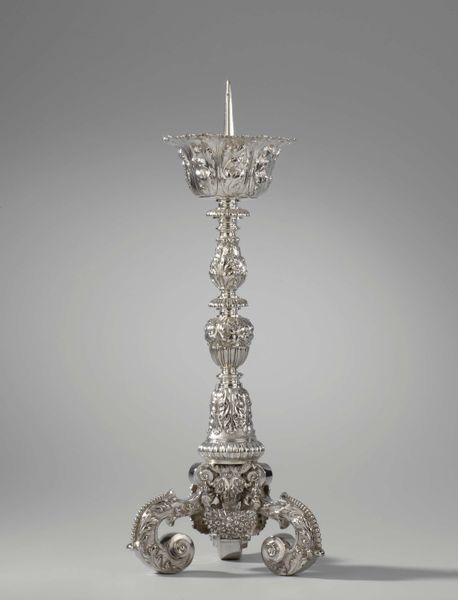
Dimensions: height 35.5 cm, width 37.5 cm, diameter 13.7 cm, weight 2326 gr
Copyright: Rijks Museum: Open Domain
These silver candelabra were crafted by Johannes Schiotling, a silversmith working in 18th-century Amsterdam. They epitomize the Rococo style, reflecting the tastes of the Dutch elite. The candelabra’s design, replete with floral motifs and asymmetrical curves, speaks to a culture of refinement and luxury. The fluted column and Corinthian capital ground the piece in a classical tradition, reminding us that even in the age of revolutions, elites looked to antiquity for models of taste and power. The production of such intricate silverware depended on the exploitation of resources and labor, both locally and globally. Silver was extracted from mines in the Americas, often through the forced labor of indigenous populations and enslaved Africans. Understanding these candelabras requires us to look beyond their aesthetic appeal and consider the social and economic conditions that made their creation possible. Auction catalogs and probate inventories might reveal who owned them and how they were used, while guild records can shed light on the organization of silversmithing workshops. By examining these sources, we can gain a deeper appreciation of art's place in the broader context of history.
Comments
rijksmuseum about 2 years ago
⋮
These three-branch candelabra are early examples of the consistent application of Neoclassicism in Amsterdam art. The stem is shaped like a Corinthian column. This Classical order is identifiable by the capital, the column’s crowning element with acanthus leaves. Many other parts of the candelabra feature the same kind of foliage.
Join the conversation
Join millions of artists and users on Artera today and experience the ultimate creative platform.

